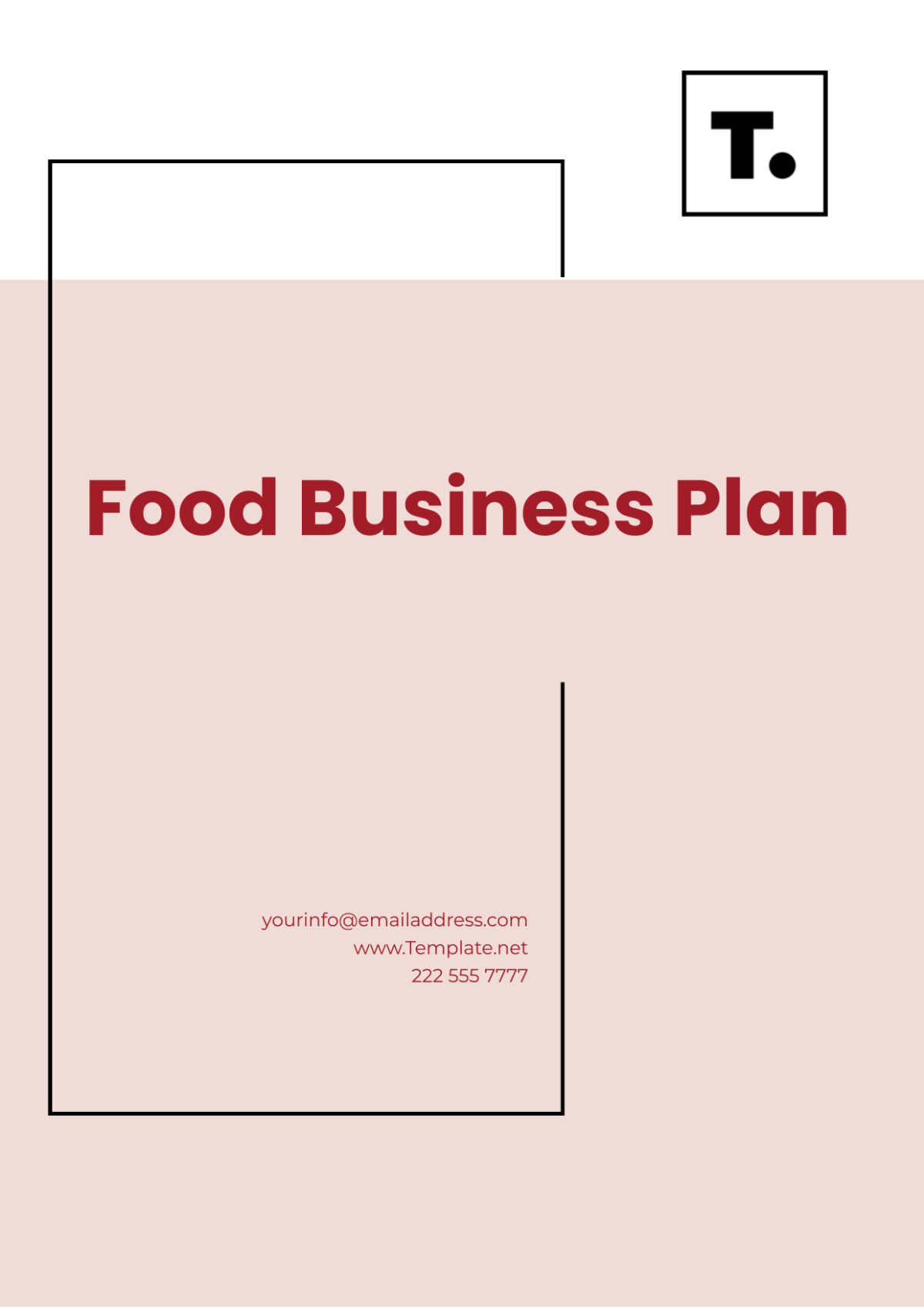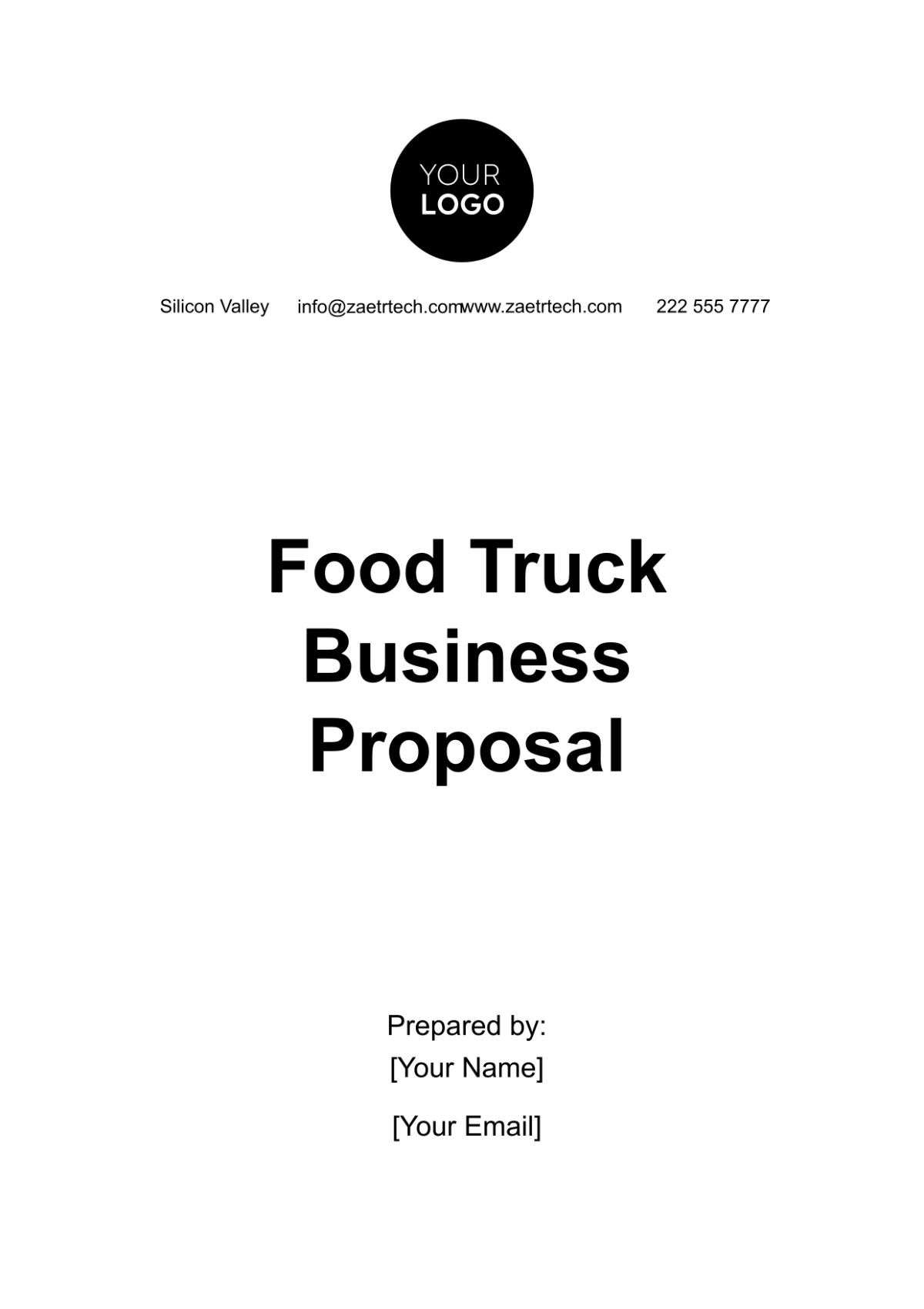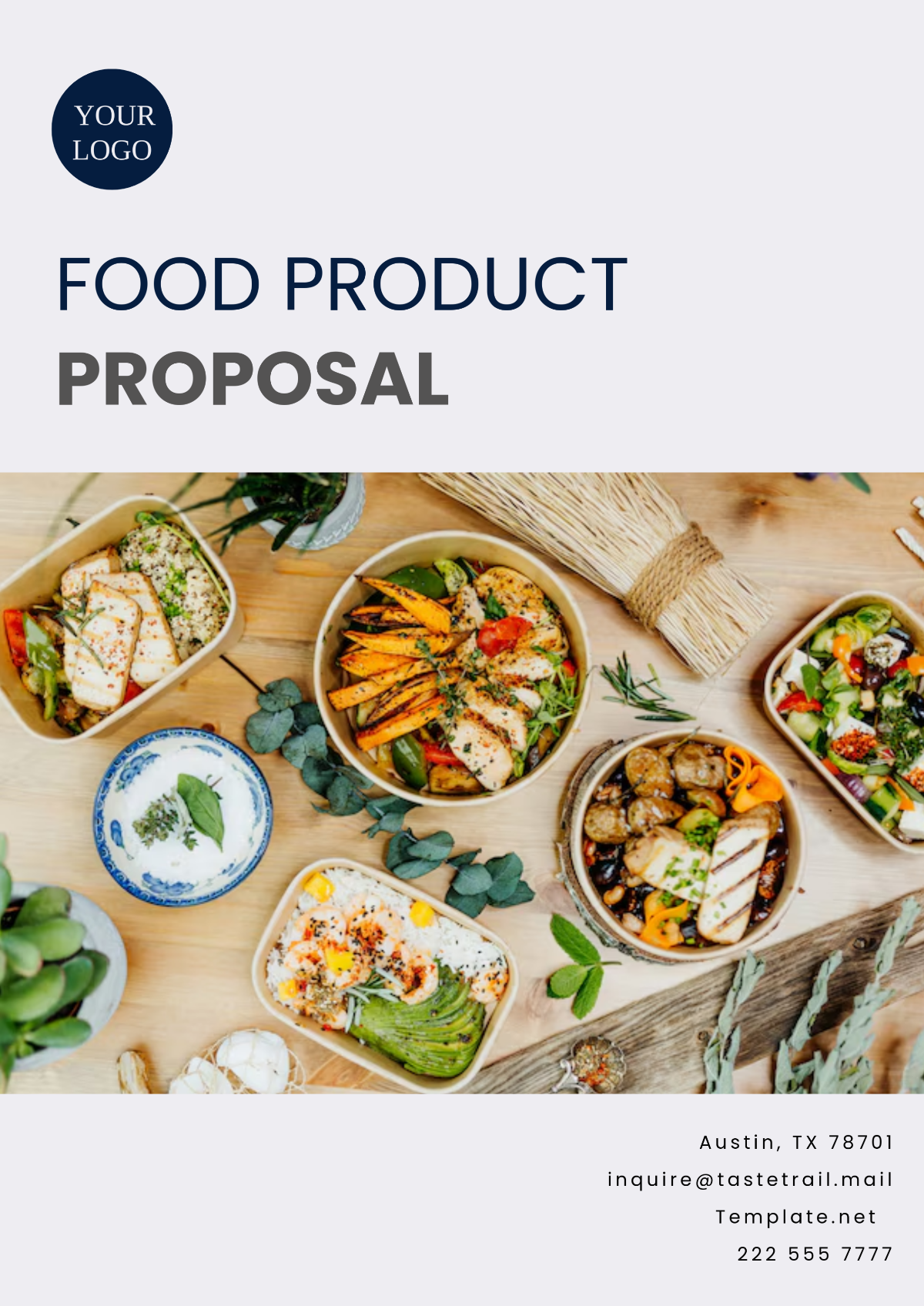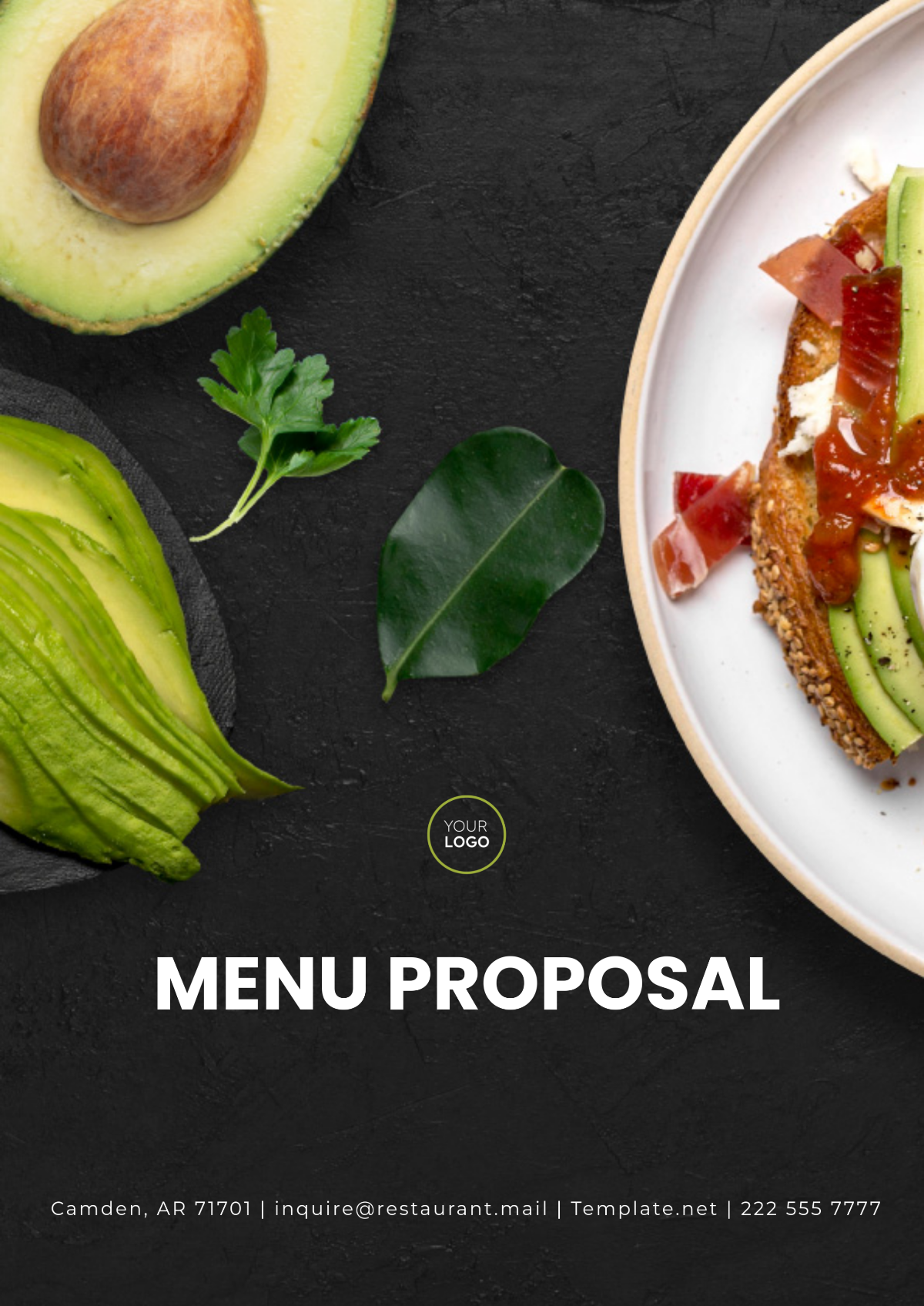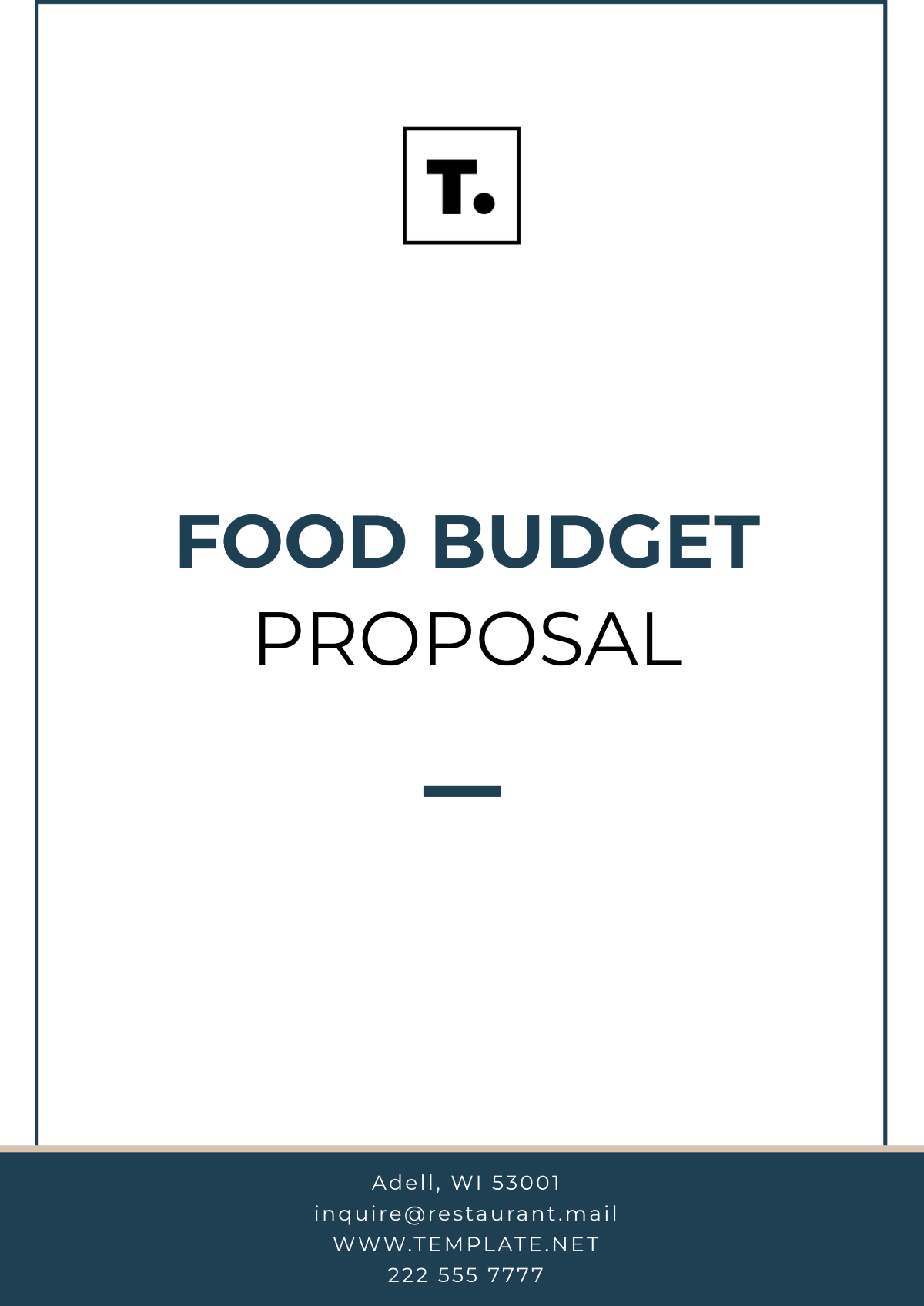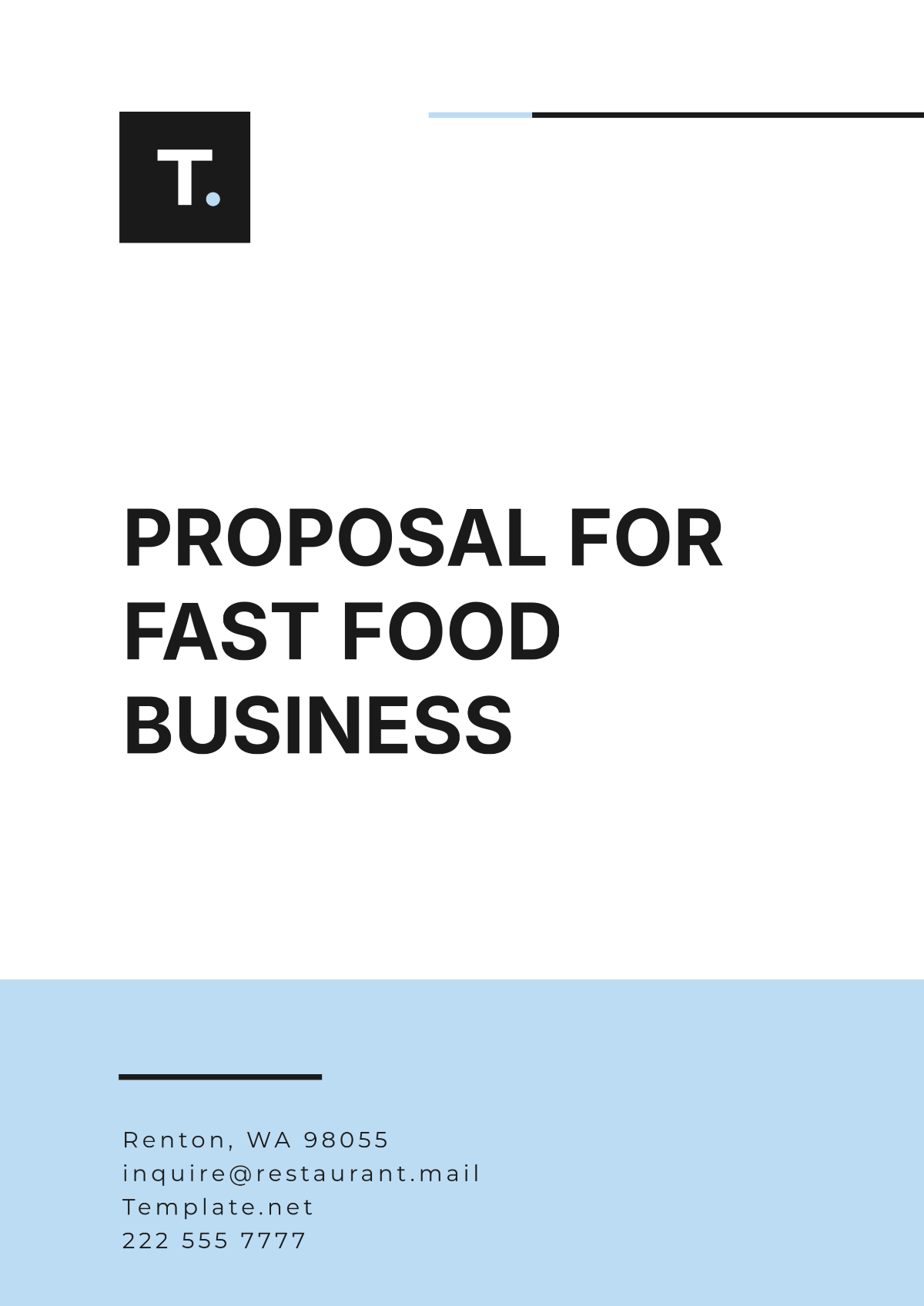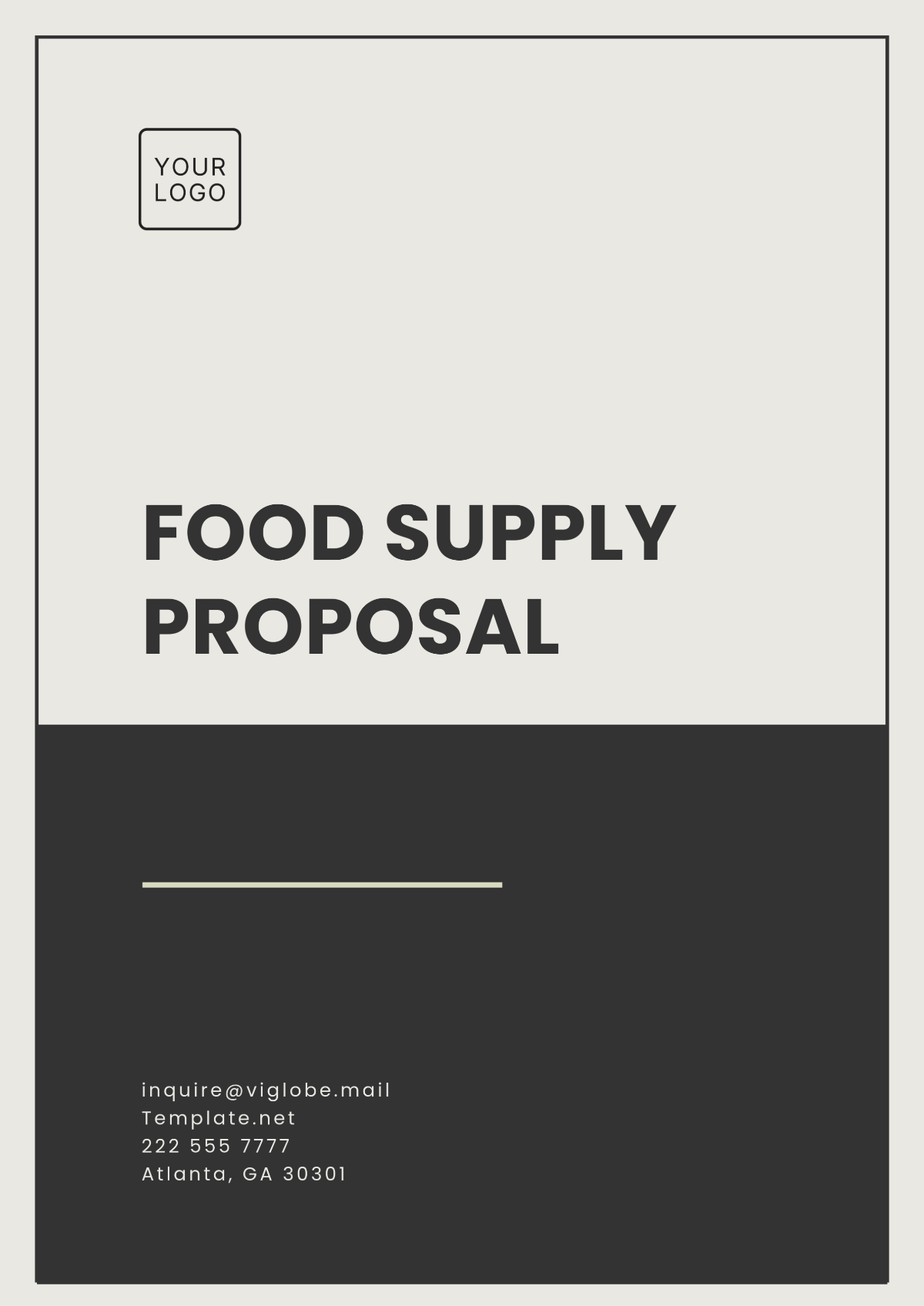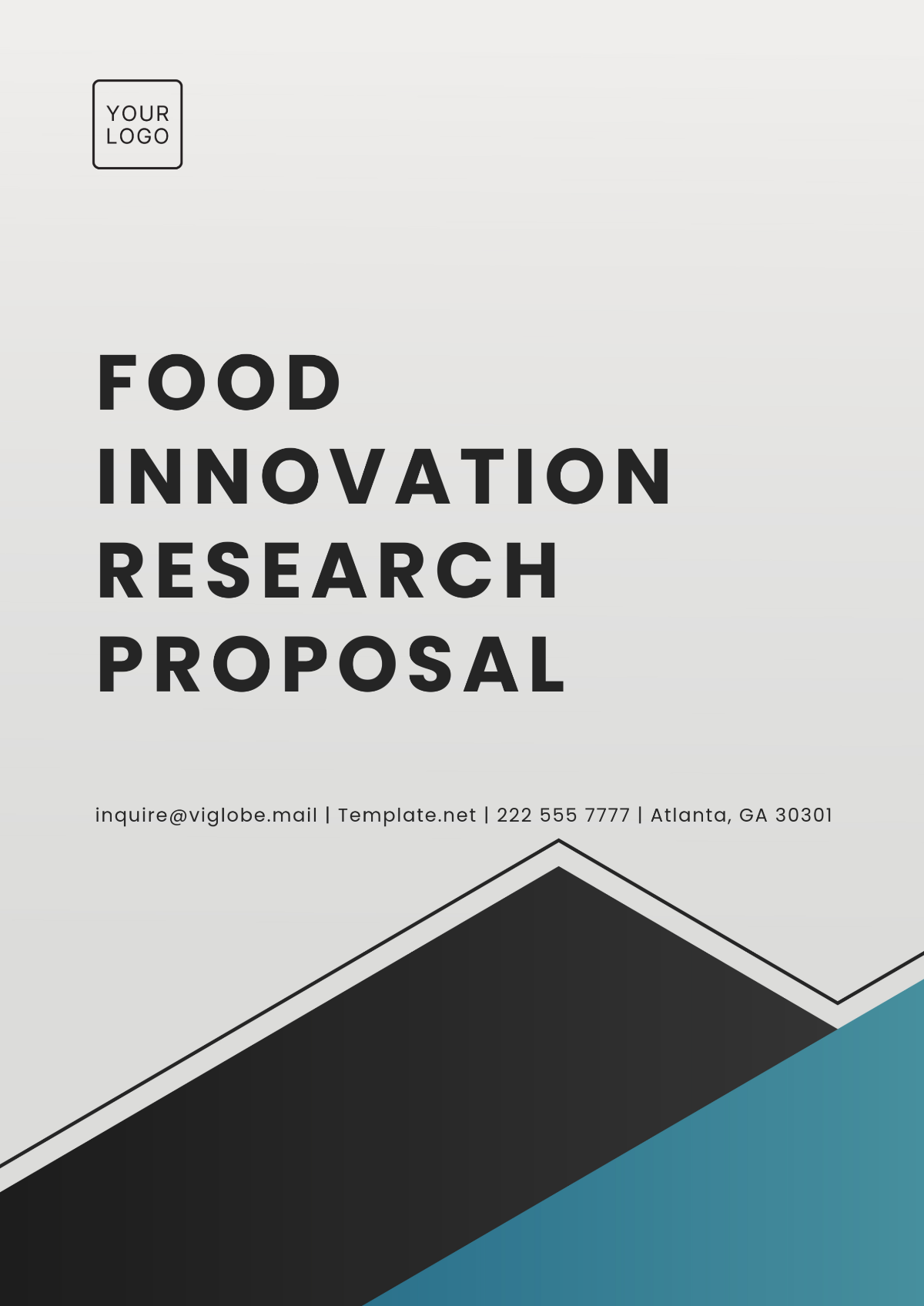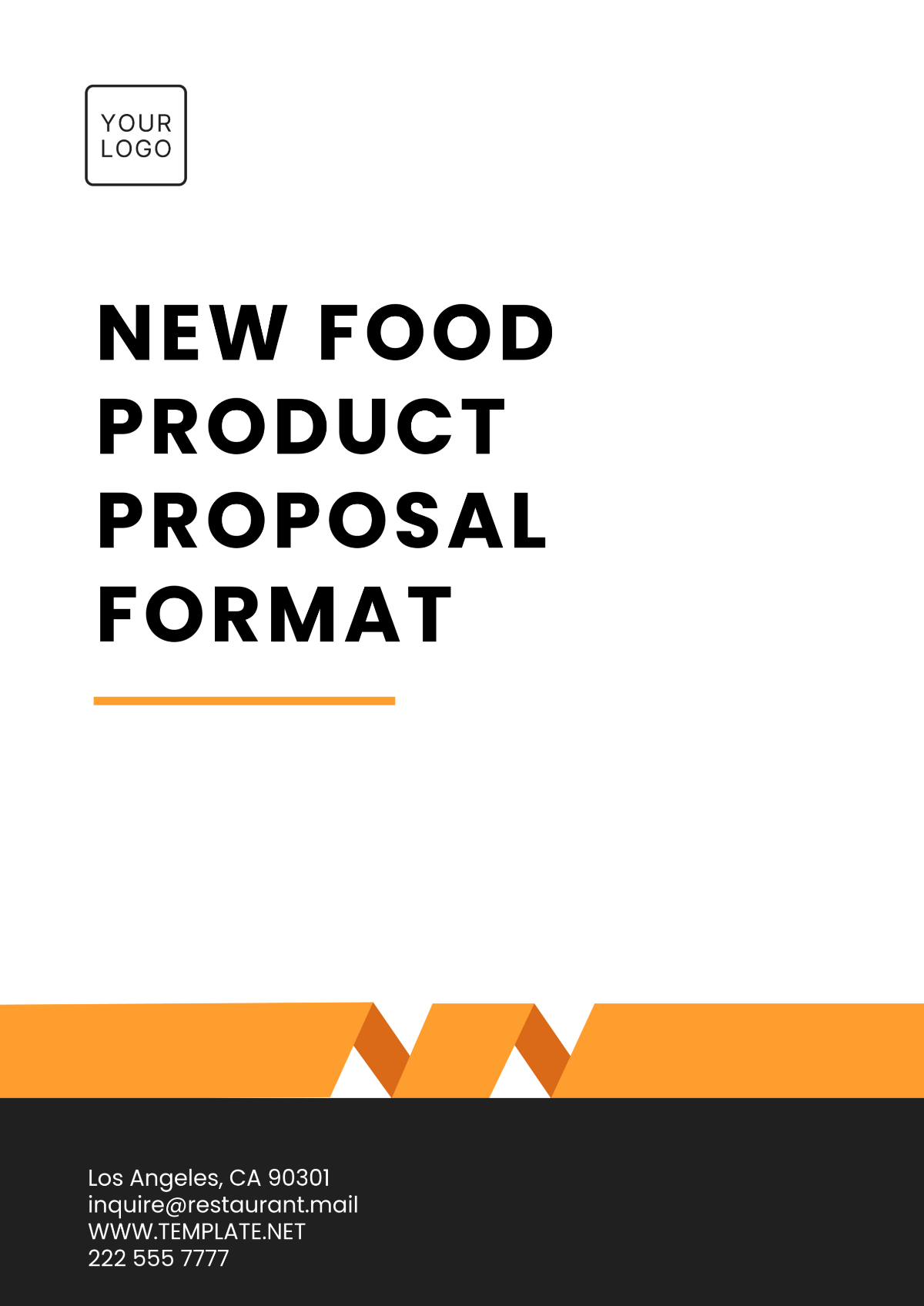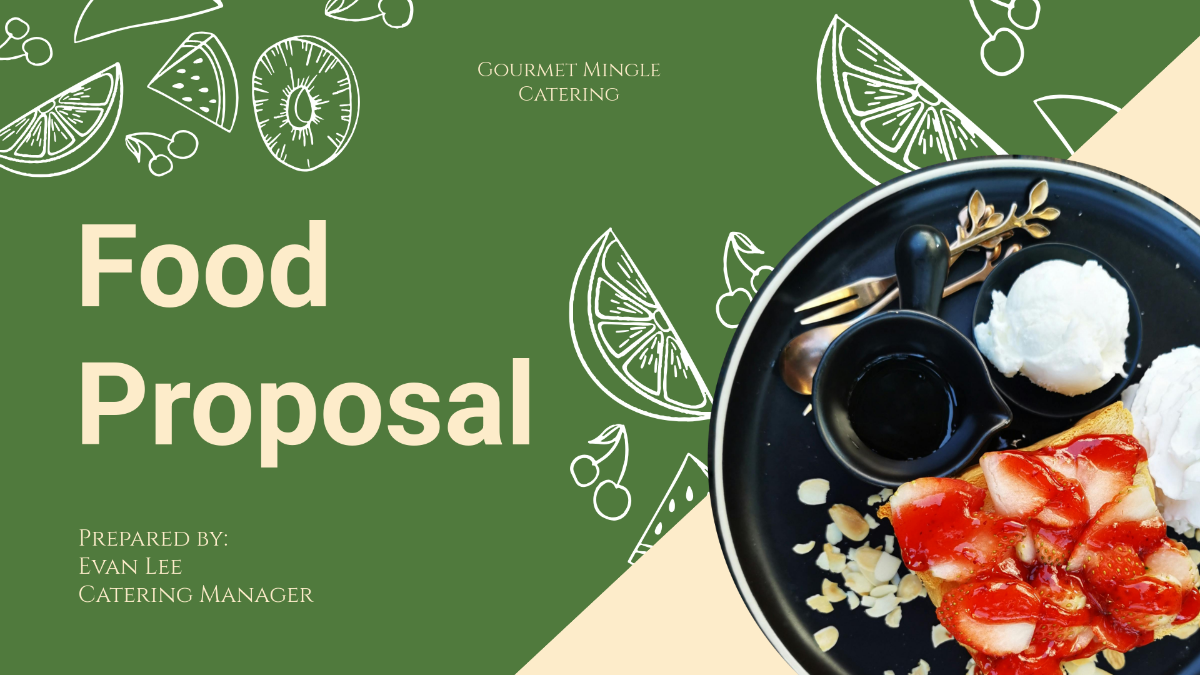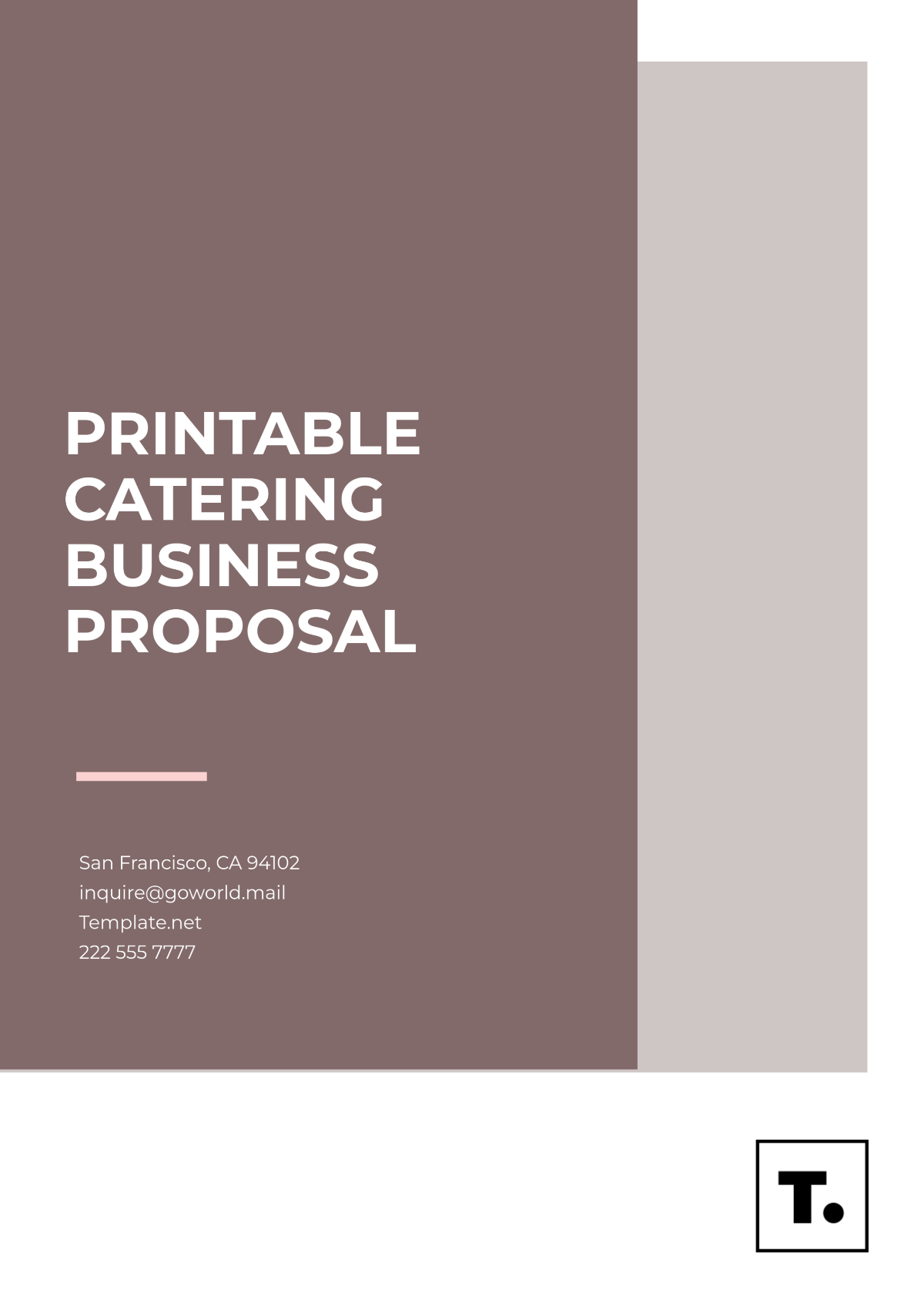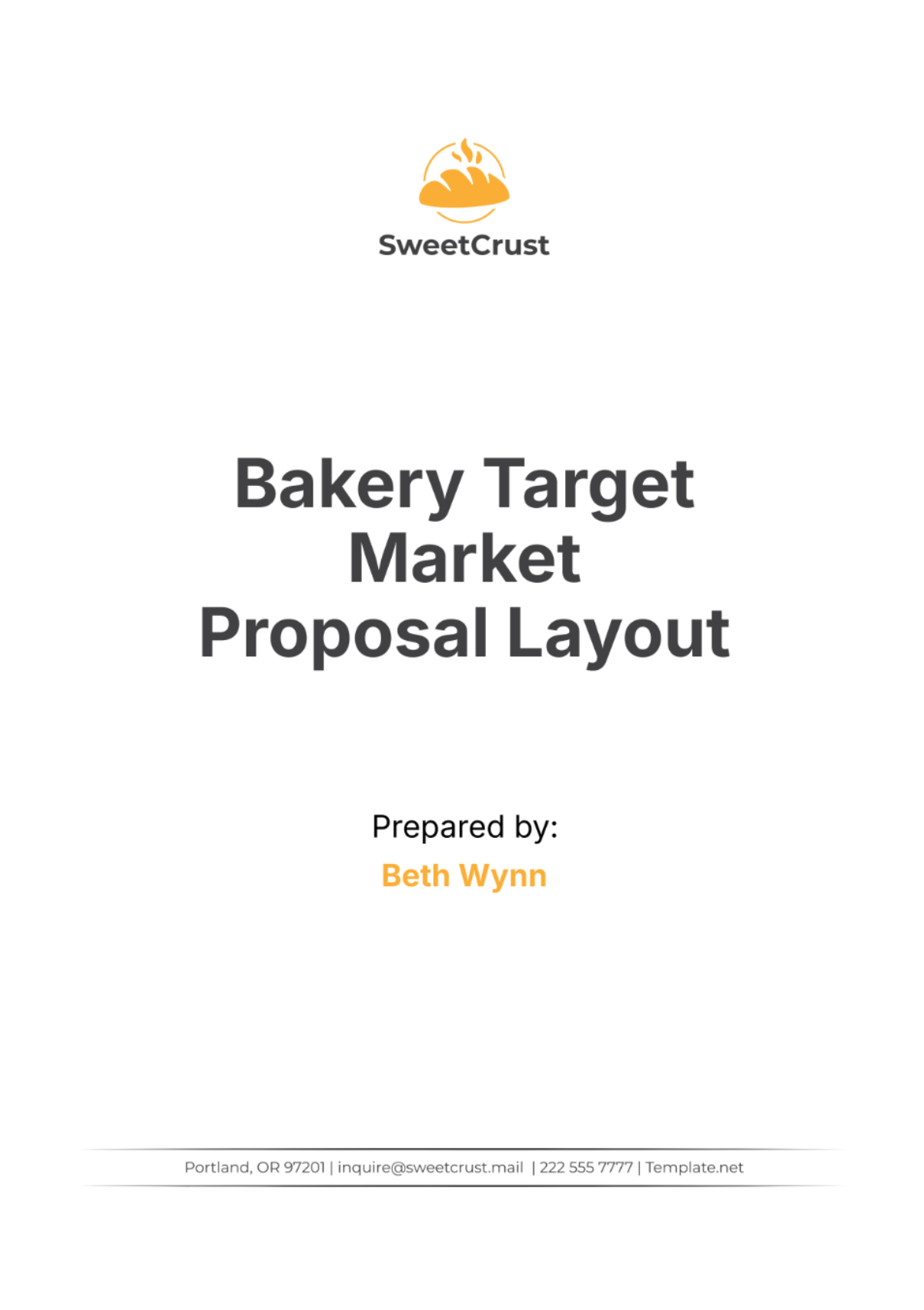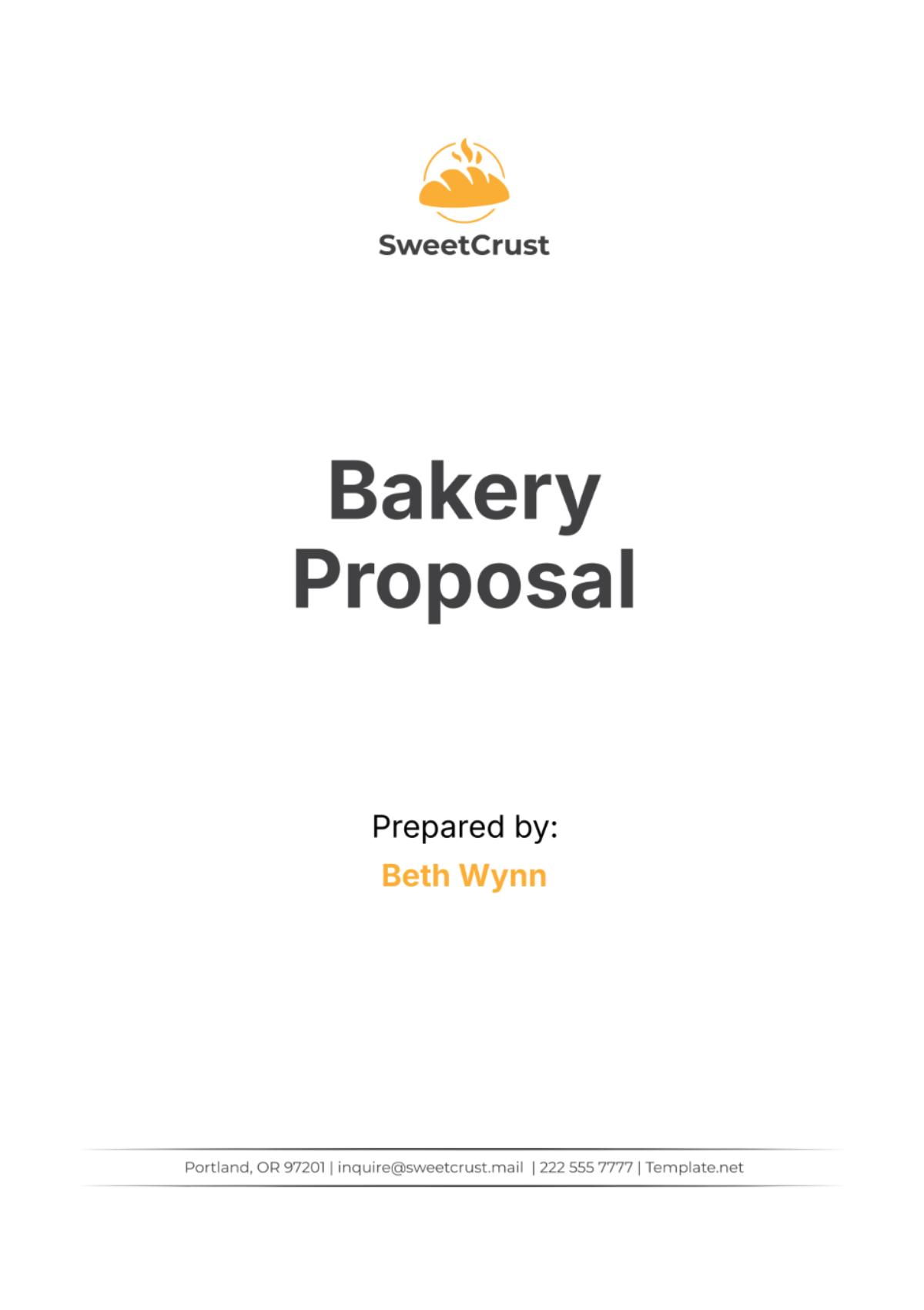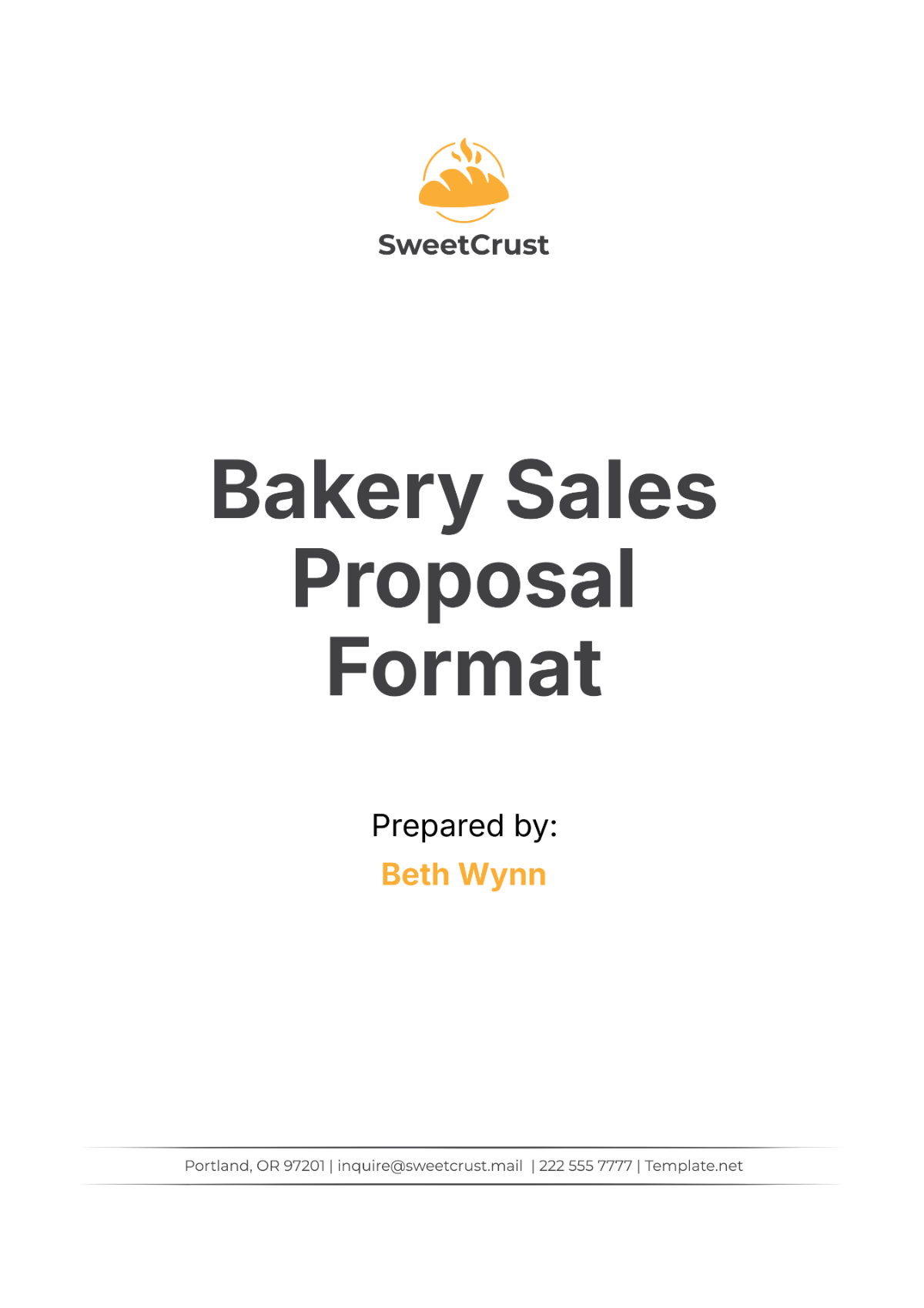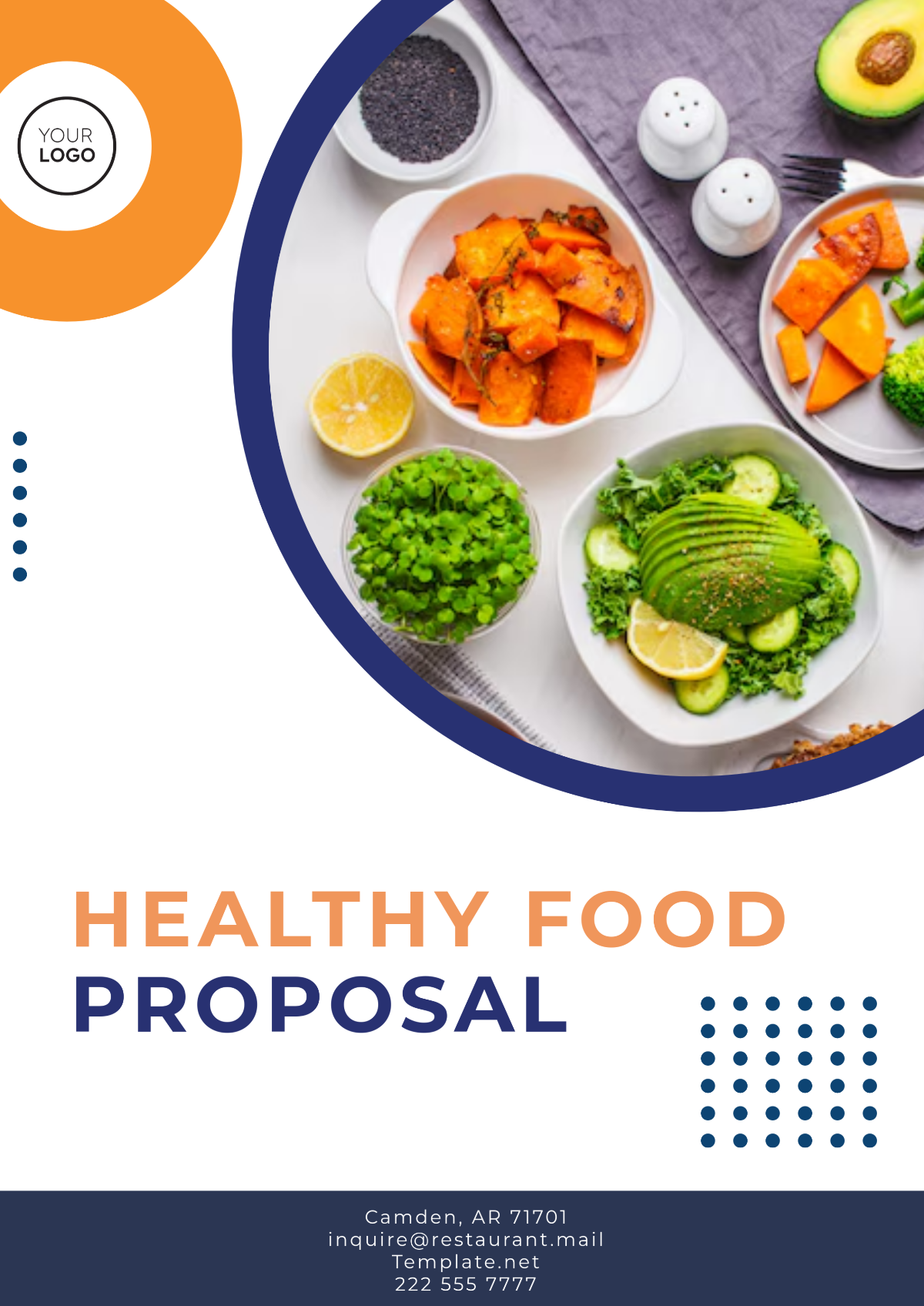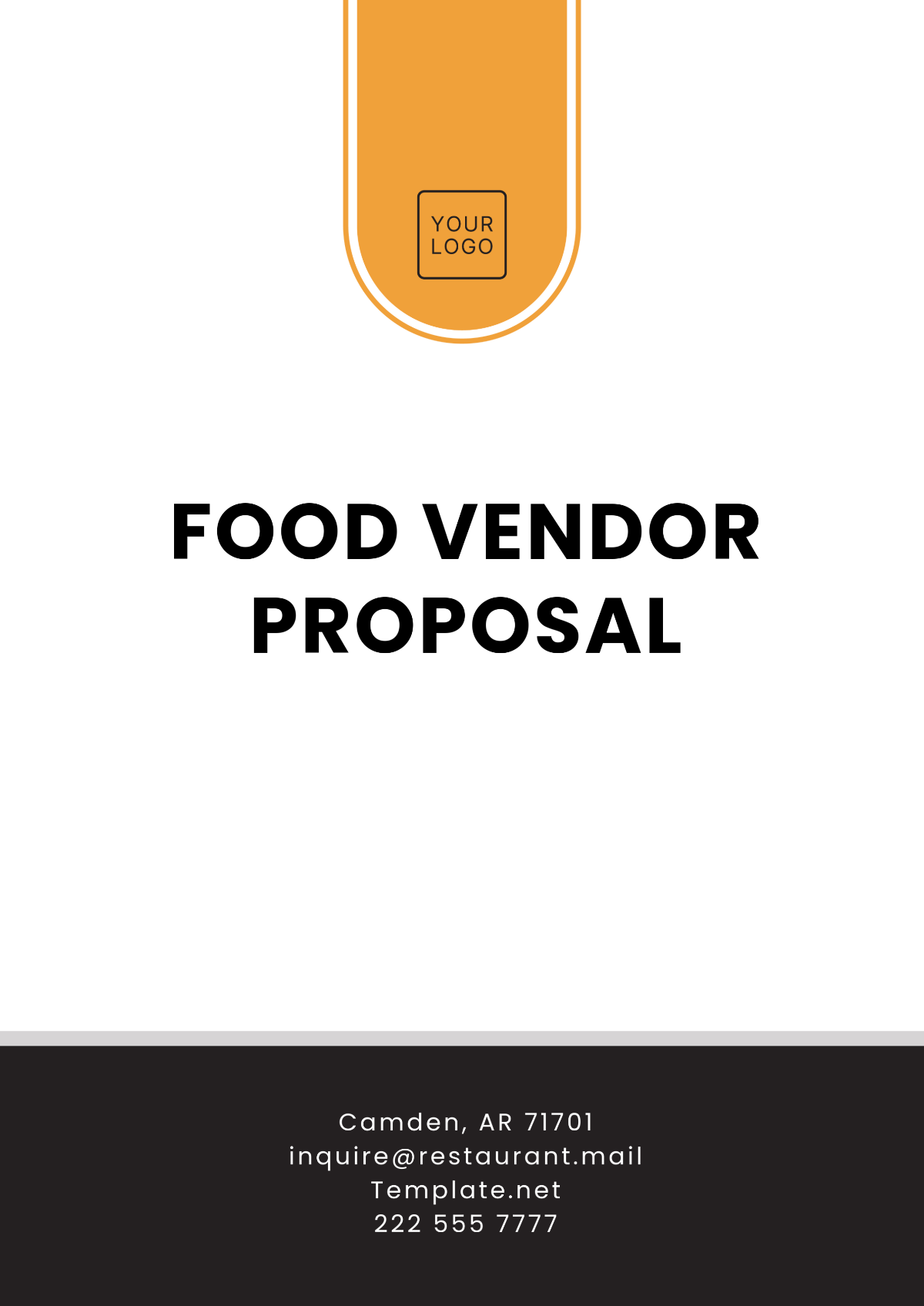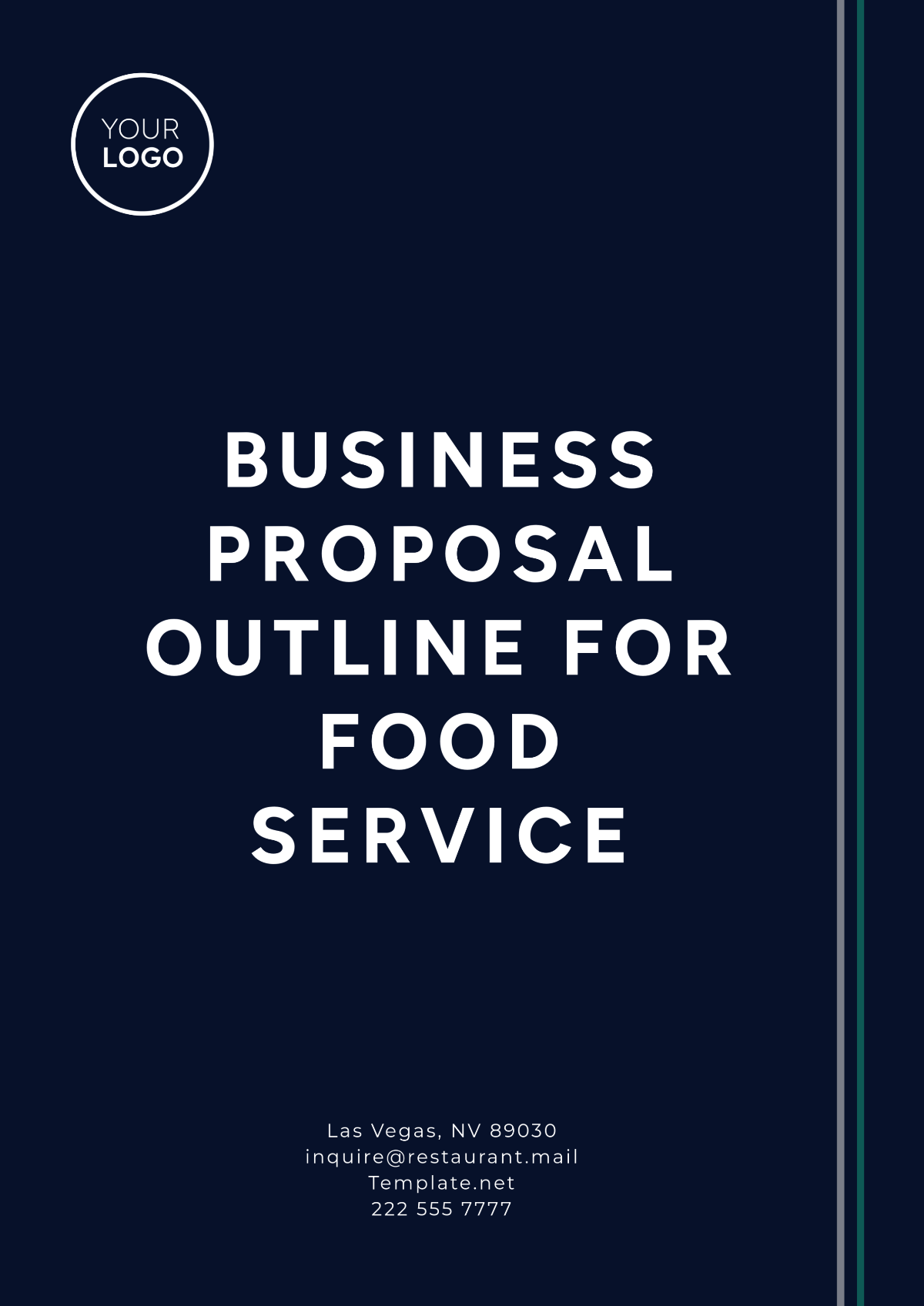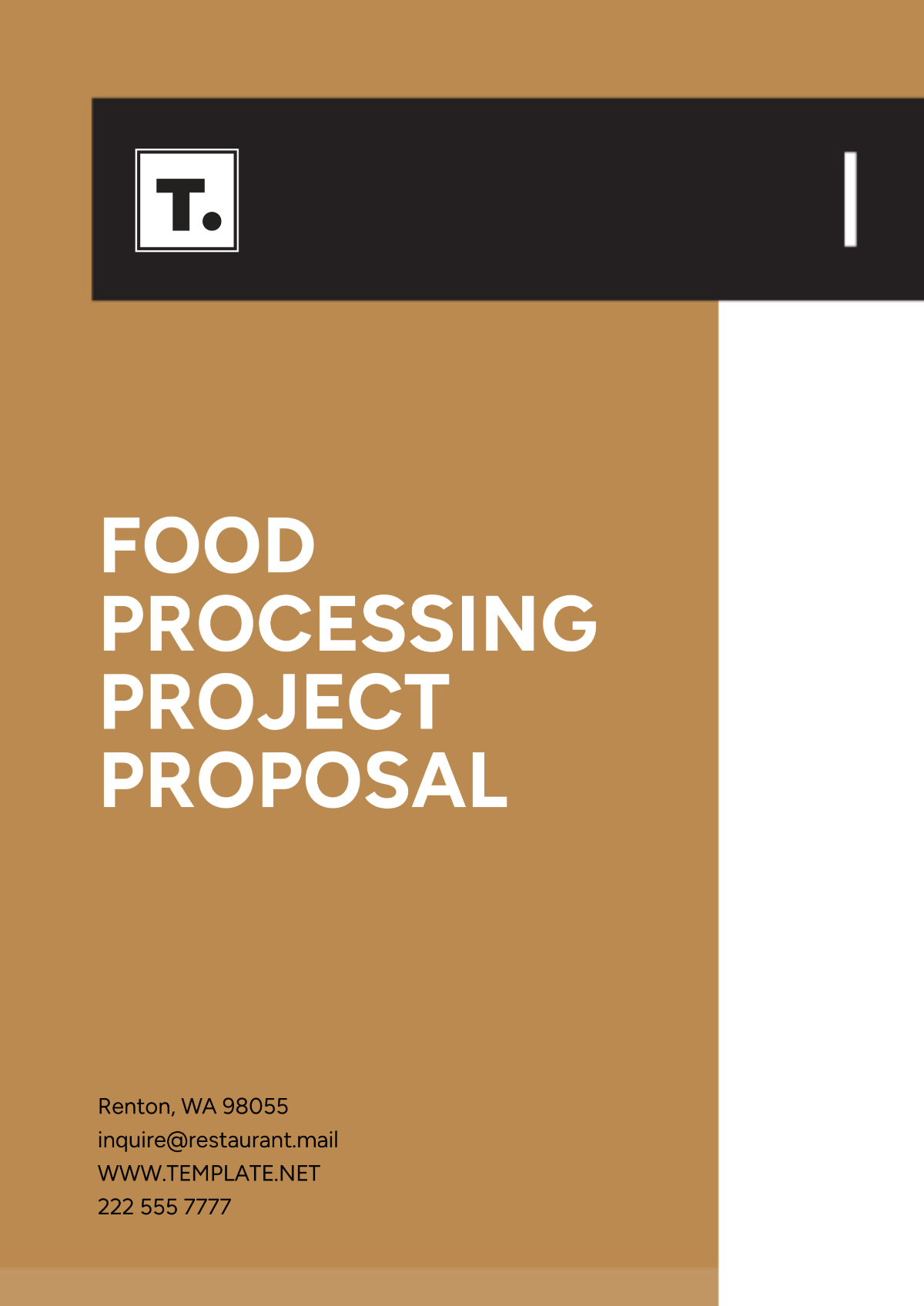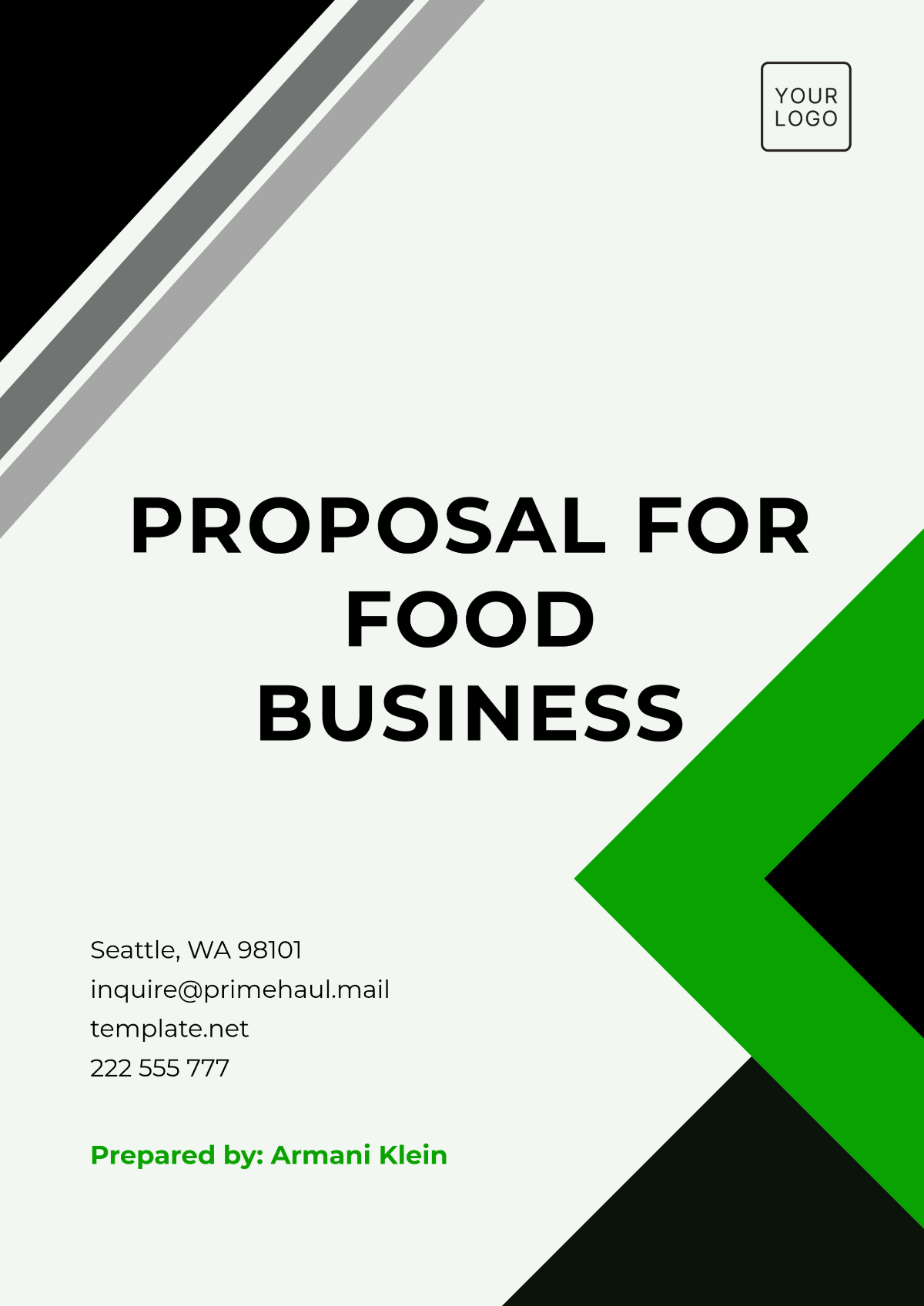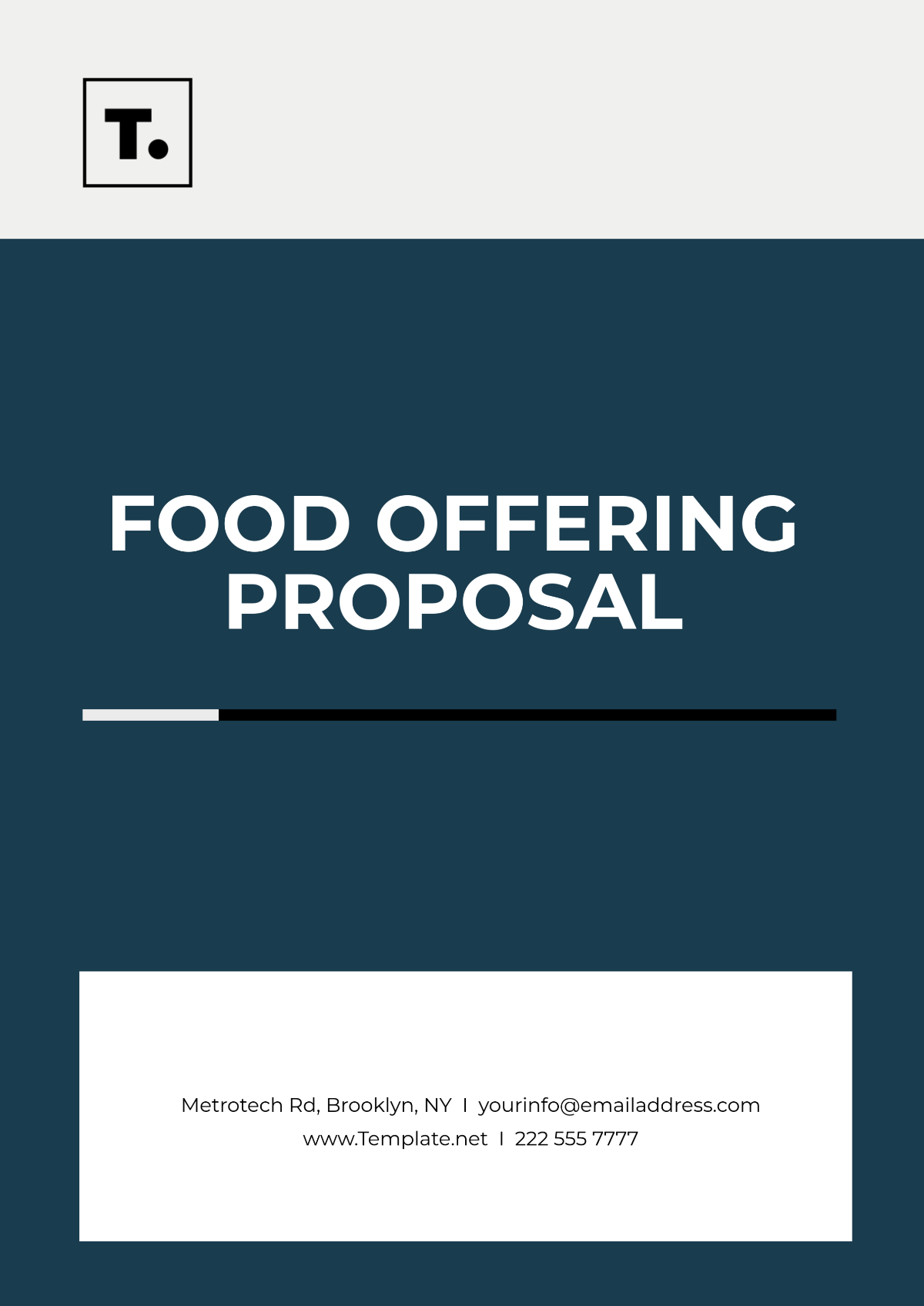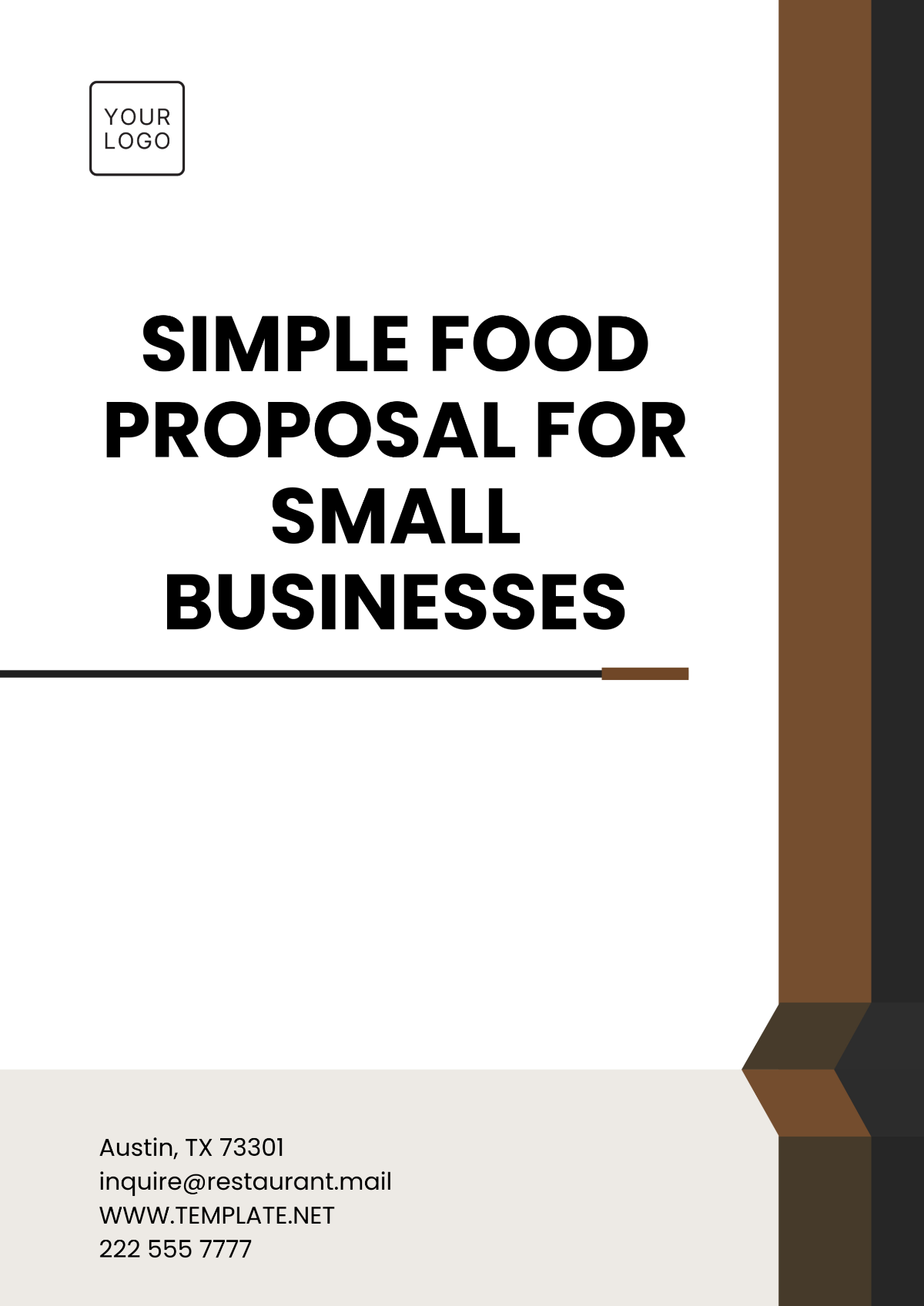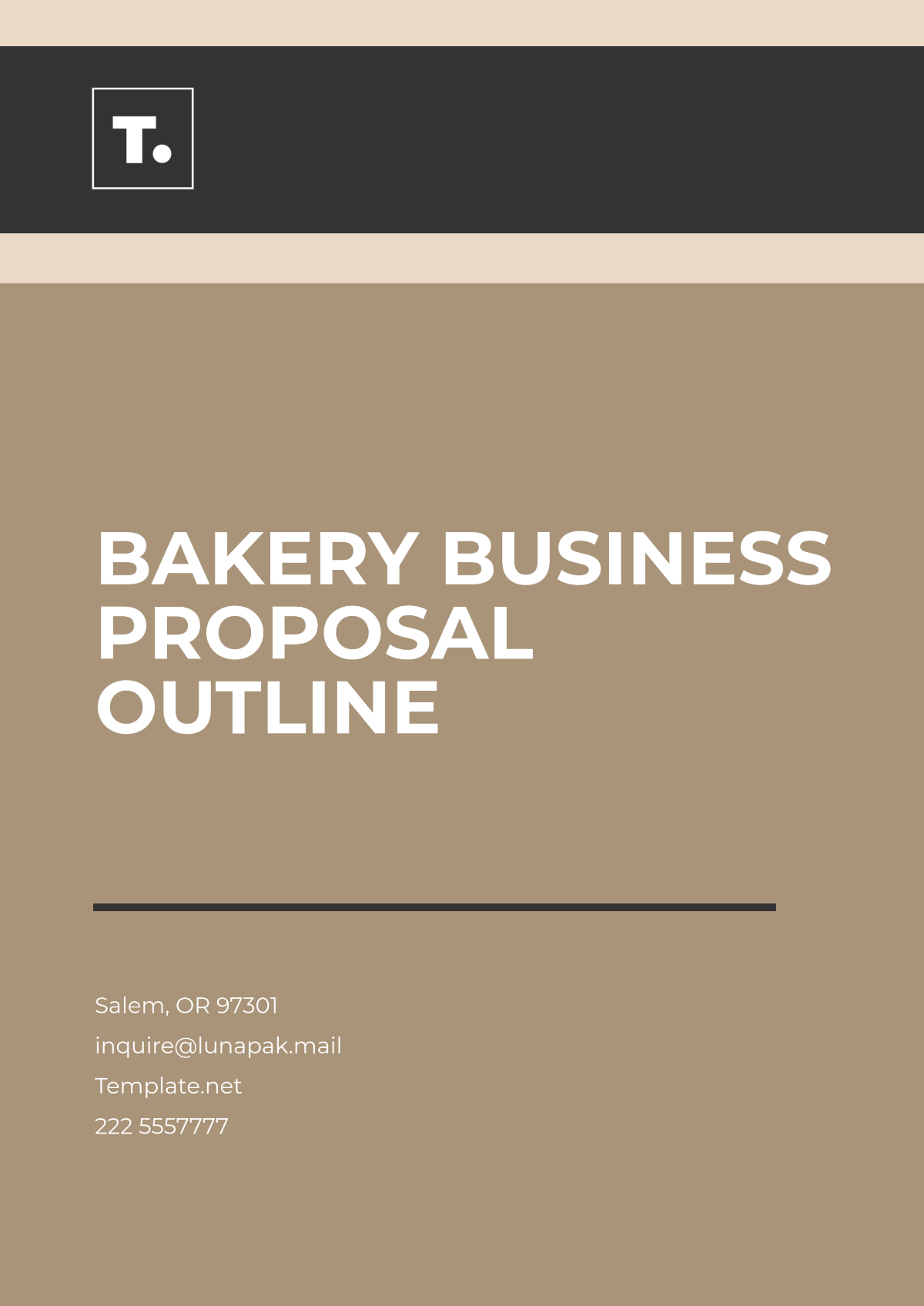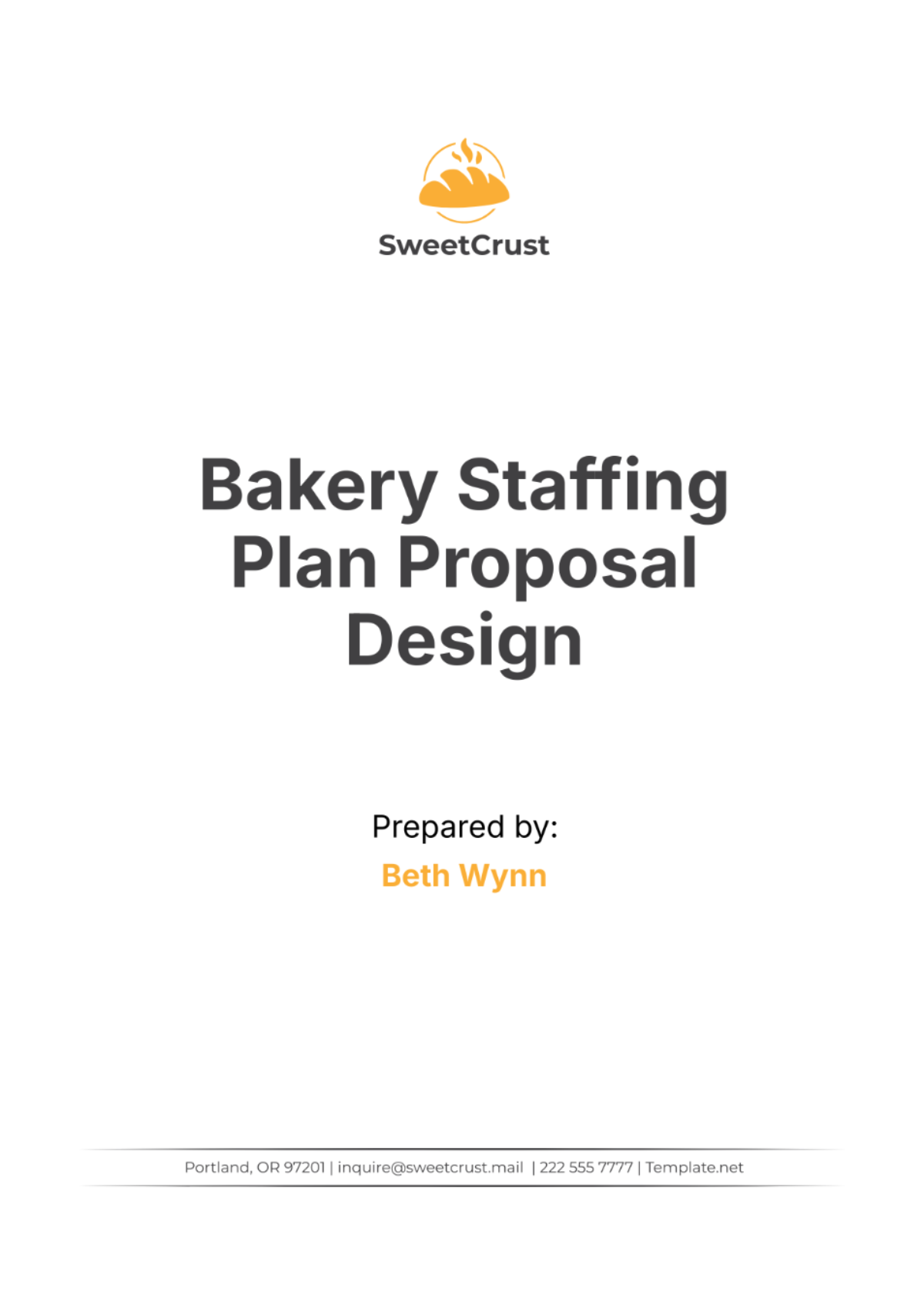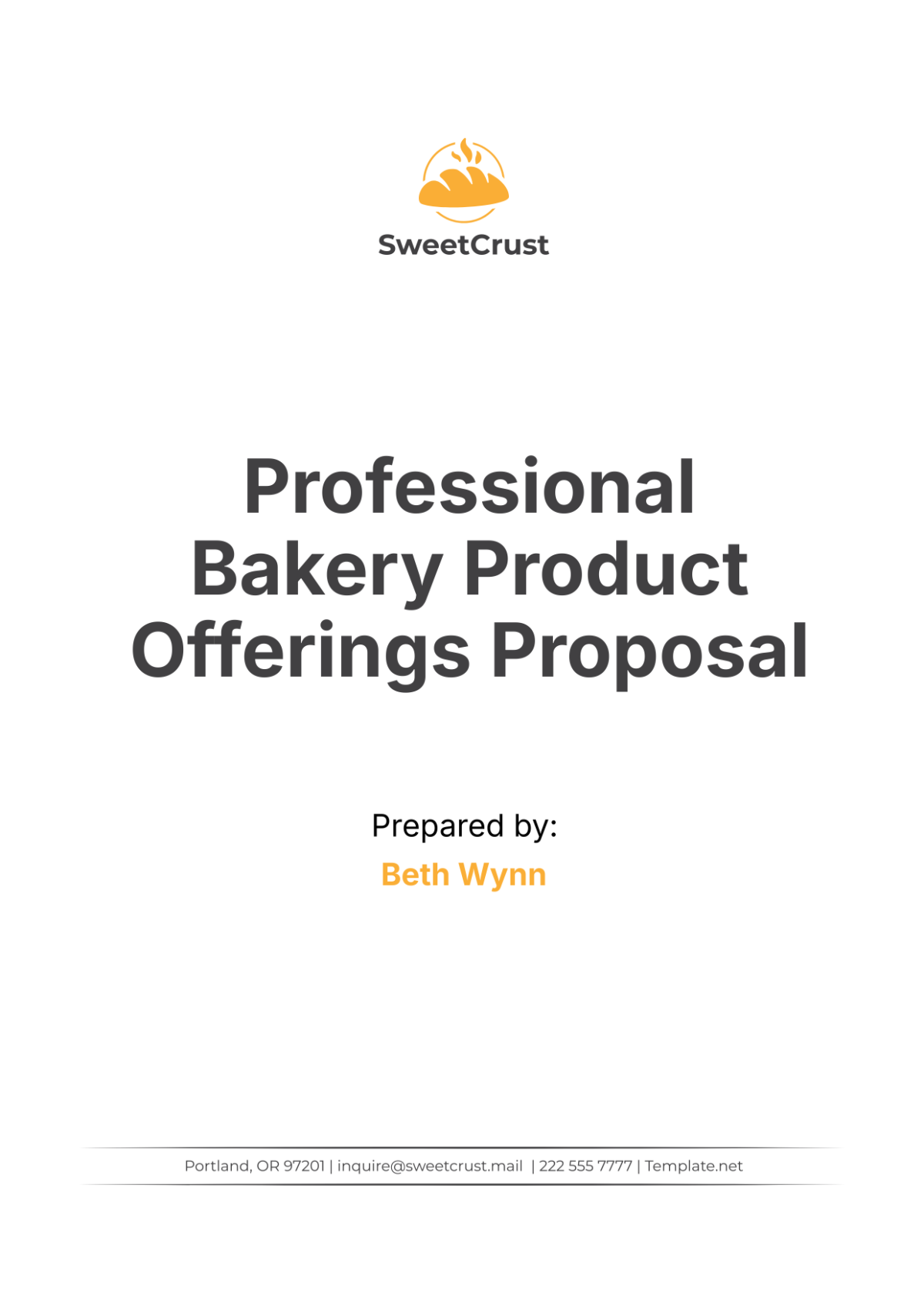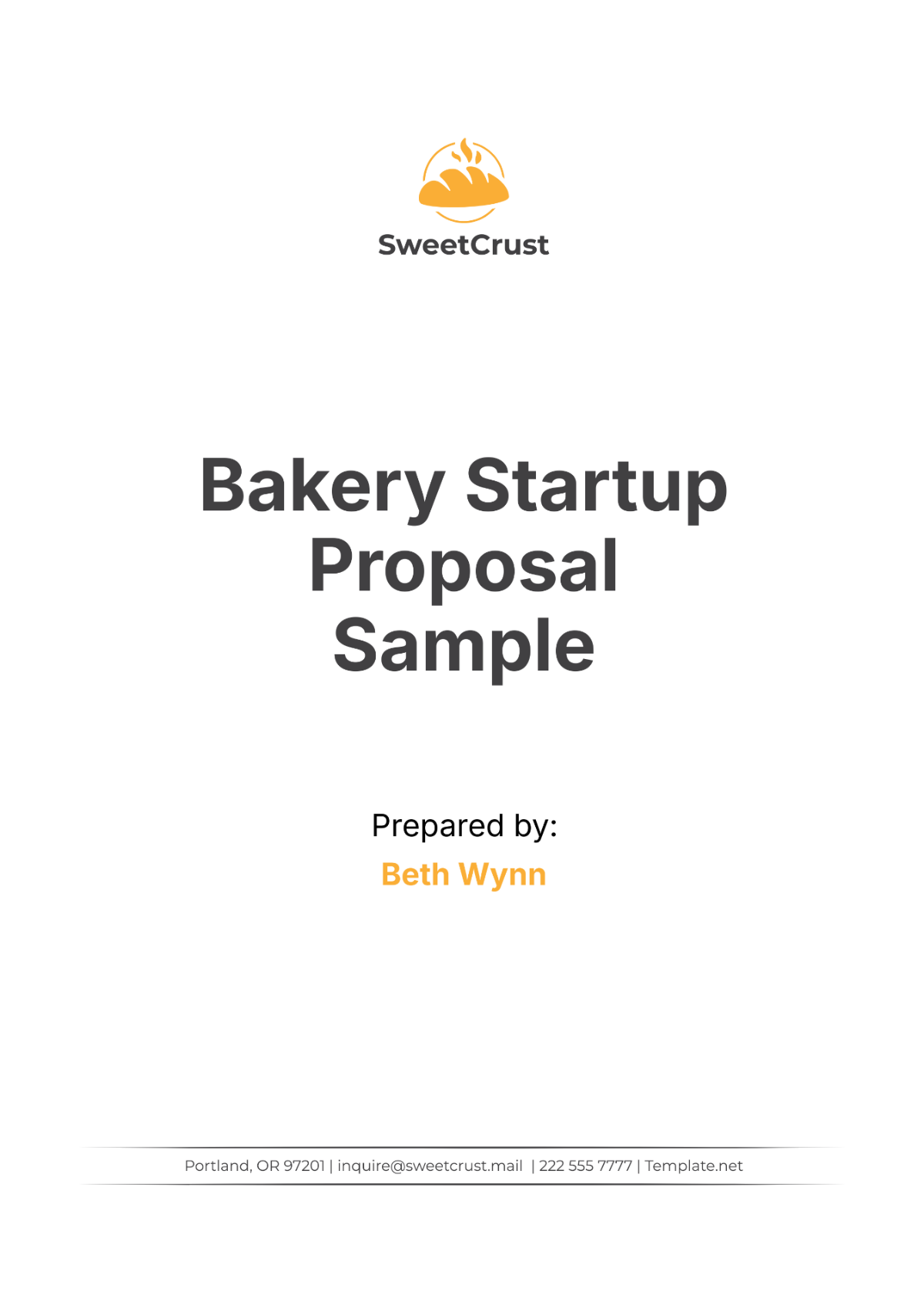Bakery Target Market Proposal Layout
I. Executive Summary
A. Overview of the Bakery
(Describe the bakery’s mission, vision, and core values. Highlight its unique aspects, such as specialties or innovations, to provide a snapshot of the business.)
B. Summary of Market Analysis
(Summarize the key findings from the market analysis, including target demographics and market size. Provide an overview of the market potential and growth opportunities.)
C. Key Objectives and Goals
(Outline the primary objectives the bakery aims to achieve with this proposal, such as increasing market share or launching new products. Define specific, measurable goals to track progress.)
D. Proposed Strategies and Recommendations
(Present the recommended marketing strategies and tactics to achieve the objectives. Include a brief explanation of how these strategies will address market needs and differentiate the bakery.)
II. Market Analysis
A. Market Overview
(Provide an overview of the bakery industry, including current trends and growth forecasts. Discuss key factors influencing the market, such as consumer behavior and economic conditions.)
B. Target Market Segmentation
Demographic Segmentation
(Describe the age, gender, income, and occupation of the target customers. Include data on their purchasing power and lifestyle preferences.)
Geographic Segmentation
(Identify the geographic regions where the bakery will focus its marketing efforts. Discuss regional preferences and market potential in these areas.)
Psychographic Segmentation
(Explore the interests, values, and lifestyles of the target market. Explain how these psychographic factors influence purchasing decisions.)
Behavioral Segmentation
(Analyze customer behaviors such as buying patterns, brand loyalty, and usage rates. Discuss how these behaviors impact product selection and marketing approaches.)
C. Customer Needs and Preferences
Buying Behaviors
(Detail how customers make purchasing decisions, including factors like convenience, price, and quality. Include insights into their shopping habits and decision-making processes.)
Product Preferences
(Identify the types of products that appeal most to the target market. Discuss preferences for flavors, ingredients, and packaging.)
Price Sensitivity
(Analyze how sensitive the target market is to price changes. Provide information on acceptable price ranges and the impact of pricing on sales.)
III. Competitive Analysis
A. Competitor Identification
Direct Competitors
(List and describe businesses that offer similar bakery products in the same market. Include their market position and business model.)
Indirect Competitors
(Identify businesses that provide alternative products or services that might compete with the bakery. Discuss their impact on the market.)
B. Competitor Profile
Market Position
(Analyze each competitor’s market share, brand reputation, and target audience. Discuss their strengths and weaknesses relative to the bakery.)
Product Offerings
(Compare the product lines of competitors, including variety, quality, and pricing. Highlight any gaps or opportunities for differentiation.)
Strengths and Weaknesses
(Assess the key strengths and weaknesses of each competitor. Discuss how these factors influence their market position and what the bakery can leverage.)
C. Competitive Advantage
Unique Selling Propositions
(Define what makes the bakery stand out from competitors. Highlight unique features, benefits, or services that provide a competitive edge.)
Differentiation Strategies
(Explain the strategies the bakery will use to differentiate itself in the market. Include innovations, customer service approaches, and product uniqueness.)
IV. Marketing Strategy
A. Branding and Positioning
Brand Identity
(Describe the bakery’s brand identity, including its logo, color scheme, and messaging. Explain how the brand will be perceived by customers.)
Market Positioning Statement
(Craft a clear positioning statement that defines how the bakery wants to be perceived in the market. Include key attributes and benefits that resonate with the target audience.)
B. Promotional Strategies
Advertising Channels
(Identify the primary channels for advertising, such as social media, print media, or local events. Discuss the rationale behind choosing these channels.)
Social Media Tactics
(Outline specific social media platforms and strategies to engage with customers. Include content types, posting schedules, and engagement techniques.)
Public Relations
(Describe PR activities planned to enhance the bakery’s public image. Include press releases, community involvement, and media outreach.)
C. Sales and Distribution Channels
In-store Sales Strategy
(Detail the sales approach for the physical bakery location, including layout, customer service, and sales tactics.)
Online Sales and E-commerce
(Explain the strategy for online sales, including website features, e-commerce platforms, and digital marketing efforts.)
Partnerships and Collaborations
(Identify potential partnerships or collaborations that could boost sales. Discuss how these partnerships will be structured and their expected benefits.)
D. Pricing Strategy
Pricing Model
(Define the pricing model to be used, such as cost-plus or value-based pricing. Explain how prices will be set to align with market expectations.)
Discounts and Offers
(Describe any planned discounts, promotions, or special offers. Explain how these will attract customers and drive sales.)
V. Product Offering
A. Product Description
Core Product Lines
(Provide detailed descriptions of the bakery’s main products, including ingredients, features, and benefits.)
New Product Development
(Outline plans for introducing new products. Include information on development timelines and anticipated market impact.)
B. Product Customization
Tailoring Products to Customer Preferences
(Describe options for customizing products to meet individual customer needs. Discuss how customization will enhance customer satisfaction.)
Seasonal and Specialty Items
(Highlight any seasonal or specialty products. Explain how these items will attract customers and boost sales during specific times of the year.)
C. Quality Assurance
Product Standards
(Define the quality standards for bakery products. Include processes for ensuring consistency and quality control.)
Customer Feedback and Improvements
(Explain how customer feedback will be collected and used to improve products. Discuss methods for incorporating feedback into product development.)
VI. Sales Goals and Metrics
A. Sales Objectives
Short-term Goals
(Set specific, measurable sales targets for the near future. Include timelines and expected outcomes.)
Long-term Goals
(Define broader sales objectives for the long term. Include strategic milestones and growth targets.)
B. Performance Metrics
Key Performance Indicators (KPIs)
(Identify the KPIs that will be used to measure success. Include metrics related to sales volume, customer acquisition, and market share.)
Tracking and Evaluation Methods
(Describe methods for tracking performance and evaluating results. Include tools and techniques for data analysis and reporting.)
VII. Implementation Plan
A. Timeline and Milestones
(Provide a detailed timeline for implementing the proposed strategies. Include key milestones and deadlines for each phase of the plan.)
B. Resource Allocation
Budget Overview
(Outline the budget required for implementing the proposal. Include costs for marketing, product development, and other relevant expenses.)
Personnel and Roles
(Define the roles and responsibilities of team members involved in the implementation. Include staffing requirements and any external resources needed.)
C. Risk Management
Potential Risks
(Identify potential risks that could impact the implementation of the proposal. Include factors such as market changes, competition, and operational challenges.)
Mitigation Strategies
(Outline strategies for mitigating identified risks. Include contingency plans and measures to address potential issues.)
VIII. Conclusion
A. Summary of Key Points
(Recap the main findings and recommendations from the proposal. Provide a concise summary of the proposed strategies and objectives.)
B. Final Recommendations
(Offer final recommendations for moving forward with the proposal. Include any additional considerations or actions required.)
C. Next Steps
(Outline the immediate next steps to implement the proposal. Include action items and responsible parties.)
IX. Appendices
A. Market Research Data
(Include detailed data and charts from market research conducted. Provide any relevant statistical information and analysis.)
B. Competitor Analysis Reports
(Attach reports and detailed analyses of competitors. Include information on their market position and product offerings.)
C. Additional Resources and References
(List any additional resources, references, or supporting documents used in the proposal. Include relevant links or citations.)

